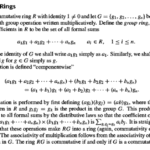How Does RNA Differ from DNA? A Comprehensive Guide
As we delve into the fascinating world of genetics, it’s essential to understand the fundamental differences between two crucial molecules: DNA (deoxyribonucleic acid) and RNA (ribonucleic acid). In this comprehensive guide, we’ll explore the intricacies of these two molecular strands, highlighting their unique characteristics and functions.
What is DNA?
Before diving into the differences between DNA and RNA, let’s start with a brief overview of what DNA is. DNA is a long, double-stranded helix made up of nucleotides – building blocks consisting of a sugar molecule called deoxyribose, a phosphate group, and one of four nitrogenous bases: adenine (A), guanine (G), cytosine (C), and thymine (T). This unique molecular structure is responsible for storing genetic information within the cells of all living organisms.
What is RNA?
RNA, on the other hand, is a single-stranded molecule composed of nucleotides similar to those found in DNA. However, there are significant differences between the two:
- RNA contains uracil (U) instead of thymine (T)
- RNA is generally shorter than DNA
- RNA has a more flexible structure than DNA
- RNA can form different secondary structures, such as hairpin loops and pseudoknots
Differences in Structure and Function
One of the most significant differences between DNA and RNA is their structure:
- Double-stranded vs. single-stranded: DNA forms a double helix, while RNA is typically found as a single strand.
- Bases: DNA contains thymine (T), whereas RNA has uracil (U).
This structural difference affects the function of each molecule:
- Genetic information storage: DNA is responsible for storing genetic information, while RNA plays a crucial role in transmitting this information to ribosomes for protein synthesis.
- Messenger role: RNA acts as a messenger between DNA and the ribosome, carrying genetic information from DNA to the site of protein synthesis.
Types of RNA
RNA is a versatile molecule with several distinct types:
- mRNA (messenger RNA): carries genetic information from DNA to the ribosome for protein synthesis.
- tRNA (transfer RNA): brings amino acids to the ribosome during protein synthesis.
Conclusion
In conclusion, while DNA and RNA share some similarities, their differences in structure and function are crucial for the proper functioning of cellular processes. Understanding these differences is essential for unraveling the mysteries of genetic information transmission and protein synthesis. As we continue to explore the intricacies of genetics, it’s clear that RNA plays a vital role in this complex dance.

Best gaming headsets 2021: Get ready to level up your gaming experience! Our article on the best gaming headsets of 2021 will help you find the perfect fit for your next marathon session. Read now and take your gaming to the next level!
Which word best describes the speaker in the story: a creative, b dull, c smart, d solemn: Looking for insight into human behavior? Our analysis of which word best describes the speaker in the story will give you a fresh perspective on character development. Read now and discover the power of storytelling!






